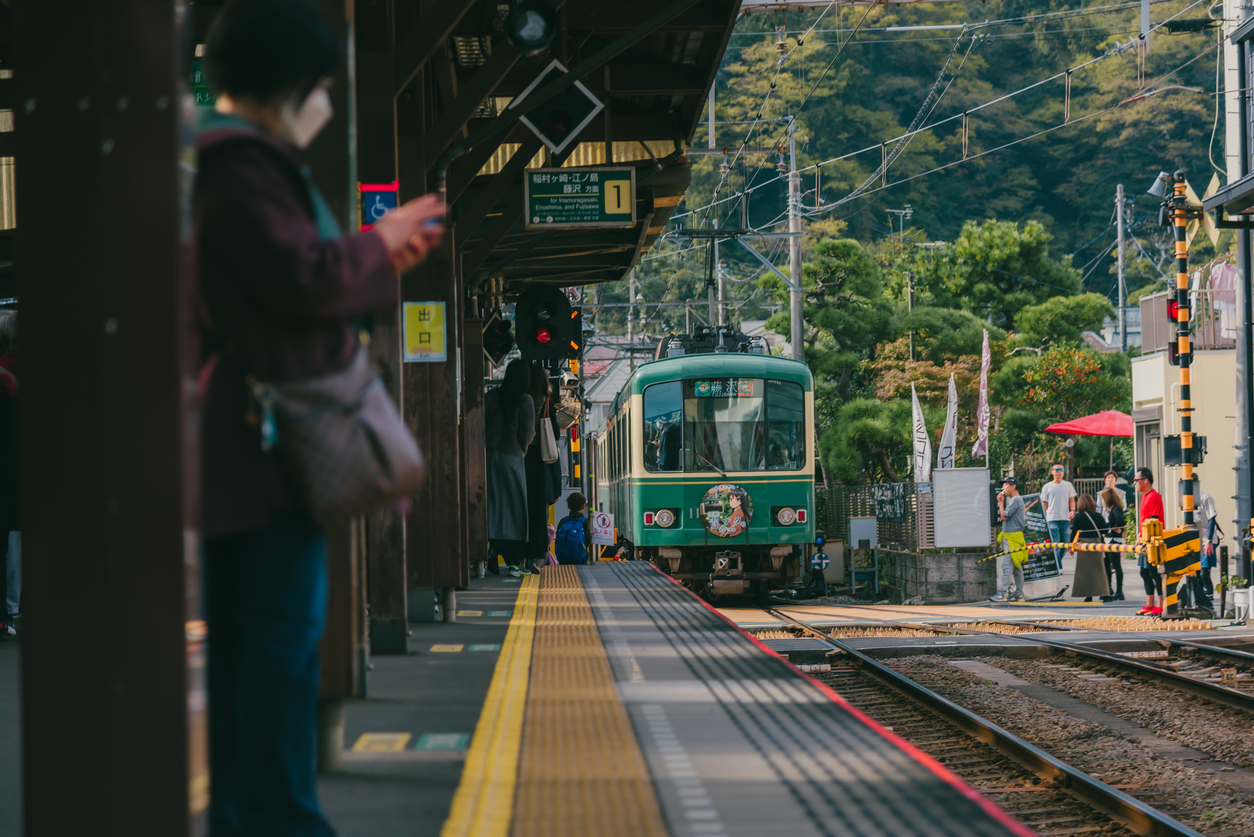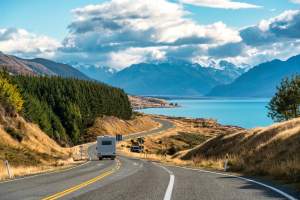
Japan isn’t just a place you visit — it’s a place you travel through. Literally. And the best way to do that? By train.
Forget airports and rental cars. Japan’s rail network is one of the most efficient, scenic, and satisfying ways to move through a country anywhere in the world. The trains are fast. They’re clean. They run like clockwork. And with the right pass, they’re surprisingly affordable.
This isn’t just transportation — it’s a window into Japanese culture, geography, and rhythm. Whether you’re hopping bullet trains between megacities or drifting through the countryside in a quiet local line, exploring Japan by train turns the journey itself into the main event.
Here’s what it’s like to experience the country with a Japan Rail Pass — and how to make the most of your own rail adventure.
Why the Train Culture in Japan Is Different
Japan doesn’t treat trains like utilities — it treats them like experiences. People board trains in silence. They queue respectfully. Conductors bow. Even local commuter trains run so smoothly it feels rehearsed. And then there’s the shinkansen, or bullet train — an engineering marvel that glides through the landscape at up to 200 mph, as quiet as it is fast.
In Japan, trains are part of everyday life, not just for tourists. That means the entire system is built around reliability, hospitality, and clarity. You don’t need a car. You don’t need to speak Japanese. You just need a pass and a plan.
What Is the Japan Rail Pass?
The Japan Rail Pass (JR Pass) is a time-based ticket available exclusively to foreign tourists. You buy it before you arrive (or at select locations in Japan) and get unlimited travel on JR-operated lines for 7, 14, or 21 consecutive days.
That includes:
- Most shinkansen (except Nozomi/Mizuho types)
- All JR local trains
- JR buses and some ferries
- Free seat reservations
- The Narita Express and Kansai Airport Express lines
Once activated, it becomes your golden ticket. Flash it to station staff and walk through. Reserve seats without paying extra. Hop cities without thinking twice.
What It Costs (as of 2025)
After a major price hike in 2023, the JR Pass is no longer the too-good-to-be-true bargain it once was — but it can still be worth it if you plan to move around a lot.
- 7 days: ~¥50,000 (≈$335)
- 14 days: ~¥80,000 (≈$535)
- 21 days: ~¥100,000 (≈$670)
Yes, it’s a chunk of change. But a single round-trip from Tokyo to Kyoto already eats up ~¥28,000, so if you’re hitting three or more regions, the pass still wins. Just don’t buy it if you’re staying put in one city.
How a Rail Pass Journey Feels — A Sample Route
Let’s say you’re doing 14 days, and you want a mix of cities, nature, culture, and something weird. Here’s how that could play out — all on JR trains:
Day 1–3: Tokyo
Start in the capital. Use your pass to ride the JR Yamanote Line — the loop that connects most of Tokyo’s top neighborhoods: Shinjuku, Shibuya, Harajuku, Ueno, Akihabara.
Don’t miss:
- Early morning stroll in Meiji Shrine
- Night views from the Tokyo Metropolitan Government Building (free)
- A ramen stop at Ichiran or Afuri
- Browsing underground manga stores or futuristic arcades
Use Tokyo as your launchpad — but don’t linger too long. The country waits.
Day 4–5: Hakone or Nikko
A short hop from Tokyo, these mountain escapes offer a contrast: hot springs, temples, lake views, and open-air museums. While Hakone’s trains involve a few private lines (not covered), Nikko is fully JR accessible — and feels like stepping back centuries.
Tip: For Hakone, the JR Pass covers the Tokyo leg; buy a Hakone Free Pass for the last segment.
Day 6–7: Kyoto
Board the shinkansen to Kyoto. This ride alone is worth the pass. Watch the city blur into countryside, then mountains, then temples as you arrive in Japan’s cultural heart.
Don’t miss:
- Fushimi Inari’s red torii gates (go at sunrise)
- Arashiyama bamboo forest and monkey park
- Nishiki Market for a food crawl
- Tea ceremony or Zen meditation session
Use the JR Nara Line for a side trip to Nara — tame deer, massive Buddhas, and one of Japan’s oldest temples.
Day 8–9: Hiroshima & Miyajima
Take the bullet train south to Hiroshima. Heavy, moving, and important — the Peace Park and Museum are essential. Then hop the JR ferry (yes, covered by the pass) to Miyajima, home of the famous floating torii gate and semi-wild deer.
Stay overnight on the island if you can. At sunset, the crowds leave and the magic begins.
Day 10–11: Takayama
Backtrack inland to the Japanese Alps via the Hida Limited Express. Takayama feels frozen in time — Edo-period streets, old sake breweries, traditional ryokans. If you want to slow down, this is where it happens.
Add a trip to nearby Shirakawa-go (not JR, but worth the bus fare) for postcard views of steep-roofed thatched houses and snow-dusted village scenes.
Day 12–13: Kanazawa
Ride the Thunderbird line to Kanazawa — a city that blends modernity with samurai legacy. It’s quieter than Kyoto, but just as rich in culture.
Highlights:
- Kenrokuen, one of Japan’s top three gardens
- Higashi Chaya geisha district
- Contemporary art at the 21st Century Museum
Kanazawa’s small scale makes it perfect for a calm, reflective finale before heading back east.
Day 14: Return to Tokyo
From Kanazawa, ride the Hokuriku Shinkansen directly back to Tokyo. Arrive fast, full of memories, and possibly addicted to train life.
Pro Tips for a JR Pass Journey
- Reserve seats for shinkansen — it’s free with the pass and saves hassle.
- Travel light. Luggage storage is limited. Big bags are frowned on.
- Pack snacks — ekiben (station bento boxes) are part of the fun.
- Use hyperdia.com or Navitime to plan routes with JR-only filters.
- Activate wisely. Your pass runs on consecutive days, so time it with your first big train ride.
- Consider a regional pass if you’re staying in one area — it might be cheaper.
What Makes It Special
- The speed and precision. Trains depart to the minute. No stress. No delay.
- The changing scenery. Urban sprawl melts into rice fields, mountains, coastline, and back again.
- The quiet. No loud phone calls. No chaos. Just the sound of the tracks.
- The respect. People treat trains like sacred space. You start doing it too.
- The rhythm. After a few days, the stations, platforms, and connections feel like choreography.
What It’s Not
- Not spontaneous. The pass favors planning over wandering. Last-minute changes can be tricky.
- Not backpacker-cheap. This is high-quality travel — not shoestring.
- Not 100% inclusive. Subways, private lines, and buses may require separate tickets.
Exploring Japan by train is more than efficient — it’s poetic. It lets you feel the country’s pace, its transitions, its quiet pride in order and beauty. With a rail pass in hand, the country opens up in layers — from neon skylines to rural villages, from steaming onsens to cold mountain peaks.
So if you’re thinking about Japan in 2025, don’t just fly in and anchor down. Ride. Move. Watch the landscape tell its story, frame by frame, from a window that always shows you something new.







